Introduction: Roscoe Fish Stories
by: Sarah Bodine
by Sarah Bodine, after stories told by John C. Keats
Dedication: For all Pine Island River Rats
There was once a fish named Roscoe, who lived in the middle of a cave,
in the middle of the St Lawrence River,
in the middle of Canada and the United States
in the middle of North America,
in the middle of the Atlantic and Pacific Oceans,
in the middle of the world,
in the middle of the universe.
To the Reader
This is a story about a fish and a boy. The fish lived in a cave underneath an island and the boy lived in a boathouse on top of the same island. This island was one of the Thousand Islands in the Canadian waters of the St Lawrence River.
The boy’s family, whose three children were my cousins, escaped from the city heat of Philadelphia and made their summer home here in the boathouse perched on a two-acre rocky outcrop, which they called Pine Island.
The children grew up learning river survival skills – swimming across the channel without a life jacket, running boats by the stars at night, and fishing in the River’s secret holes and shallows.
At nighttime on the island, all the children slept in the bunkhouse, a whitewashed two-story cabin, up a winding wooden walk from the boathouse proper. The first-floor ping-pong table was far enough from the back door of the boathouse for the noisy pops and screams to be muffled from the ears of visiting adults playing bridge on the porch.
As there was no electricity on the island, my uncle John Keats, known to everyone as JK, came to tuck us in when the light faded from the River. Now, by trade, JK was a serious writer – a social critic, biographer, and chronicler of adventure for the likes of Holiday and Esquire magazines. But to us he was a storyteller. His bedtime tales that silenced both flying balls and pillow fights were the ones about a fish named Roscoe.
Roscoe Fish stories were a treasury of oral history about daily life in the Thousand Islands. Roscoe Fish is a sentient creature who lives in an underwater world that parallels and often overlaps with the experience of island children. He frequents the same locations and encounters the same challenges of the giant River.
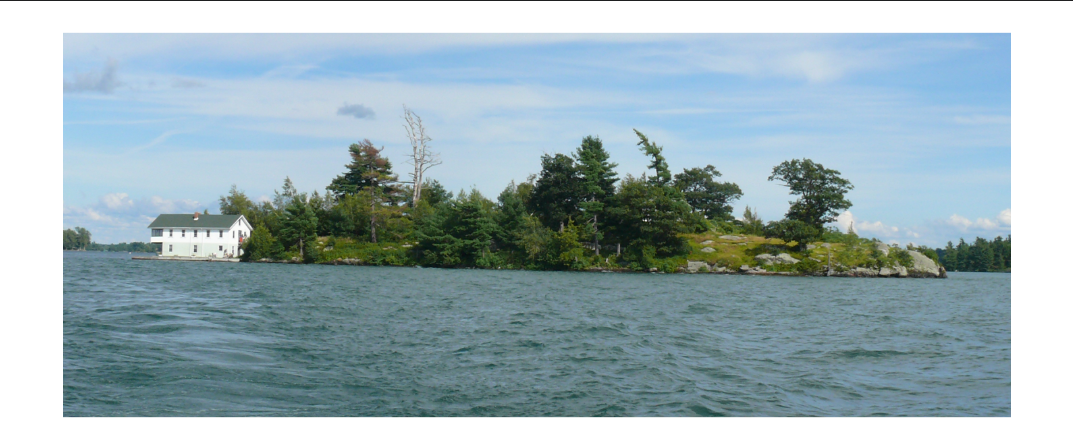
The lure of the islands drew Roscoe, as it did JK and his family. Roscoe’s journey to the Thousand Islands is chronicled here. When child and fish interact, as they often do in these stories, it is with the mutual respect that the mighty River, with its currents and flows, demands. In the end, there is recognition that in their own precarious existence, both fish and boy are in the presence of a mystery.
On any given night, these stories might have been inspired by a child’s question, such as, what do fish do for fun, or can a fish re-grow a fin that’s been cut? Or they might have evolved out of an adventure story JK was in the midst of writing, like the one about the challenge of fishing for Muskellunge at the Forty Acre Shoal in the frigid winds of late fall. For the children, each night’s episode evolved magically, out of thin air. They were convinced that Roscoe’s cave was under Pine Island and that he hung out on the swells that lapped around the boathouse.
Now, some 40 years later, despite the fact that his children, nieces and nephews, and grandchildren cherish the memories of bedtime with Roscoe Fish, there is no written record of his existence. JK never wrote anything down. And surprisingly, each child remembers only a snippet: Roscoe went boying as boys go fishing; Roscoe ate “aminal” crackers; Roscoe lived in the center of the River, the center of the world, the center of the universe. So, for subsequent generations of Pine Island children, I set out to reinvent Roscoe Fish stories, based on my memory of the Thousand Islands of my childhood and my fondness for my uncle John Keats, whose voice still lingers in my head.
Among these stories are two crucial episodes concerning Roscoe’s youth, including his perilous journey from his birthplace in a branch of the Delaware River in New York State, to his new home in the deep green water of the St. Lawrence River in the Thousand Islands. Roscoe’s odyssey to the Thousand Islands from his birthplace involves mistaken identity, a clash of species, and the loyalty of friendship.
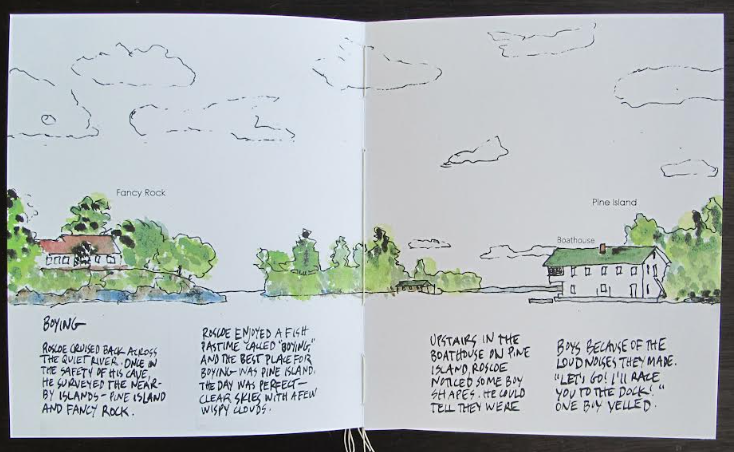
The stories include river lore, environmental science and moral lessons. For JK, I believe, they were a relief, an escape from the grind of his daily activity, which was the written salvo of the dedicated social critic, pounded out on his manual typewriter in a small cottage at the head of Pine Island. His retreat with his family to the island released him to work from both sides of his soul – the one that lamented the demise of the independent, pioneering American experience and the one that cherished engagement in life’s pleasurable pursuits, especially those connected to nature.
In these stories, the child learns from the fish about the unknowable, the unpredictable and the strange, about identity and tolerance, and especially about the other. Even though humans feel that we are in charge, we share the same space with other sentient creatures. What if the tables were turned -- can Roscoe catch and release a boy? In these stories, JK gave us not merely tall fish tales but a glimpse of a larger universe beyond ourselves. In fact, the Roscoe stories fit with JK’s notion that the greatest joy in life is to “follow a path towards a familiar but unknown destination.”
By Sarah Bodine
Sarah Bodine is a writer, editor, designer and book artist. She spent the summers of her childhood at her great-grandfather’s house, known as Cliff Cottage, on the Ontario side of the St Lawrence River near Rockport. The three Keats children were her cousins, and she often ran an outboard across the Canadian channel to spend the night on Pine Island.
All illustrations by Sarah Bodine ©2024
[From the Editor: Our deep appreciation to Sarah Bodine and her Keats cousins. Those of us who read Keats books will smile and thank them for the opportunity to read more - even if in the imagination of Sarah and her cousins. Many authors and readers will know that our articles are usually limited to 1,200-1,500 words - but this series of short stories about Roscoe may be longer - long enough for all young River Rats to want more! The good news is there will be 9 Episodes ]


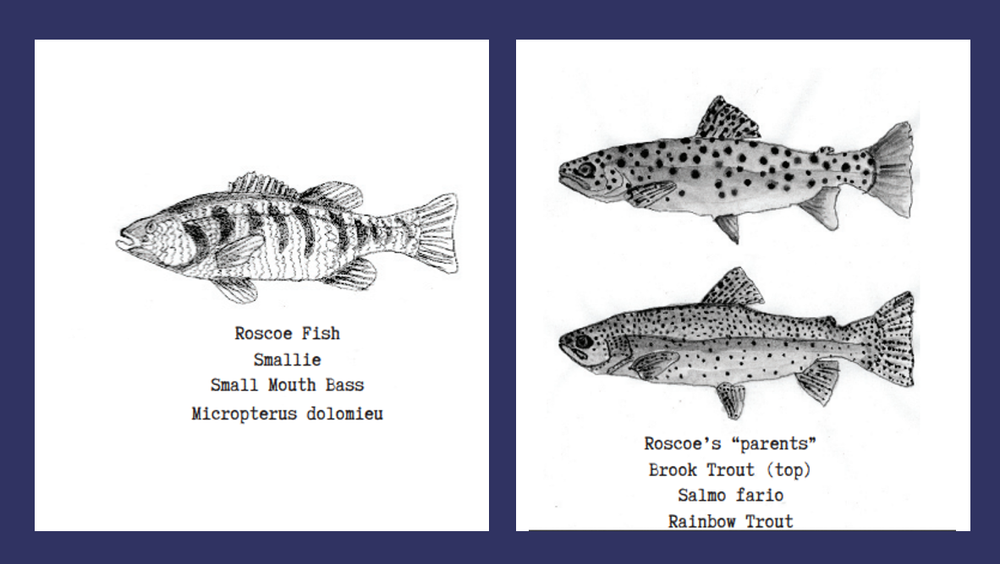
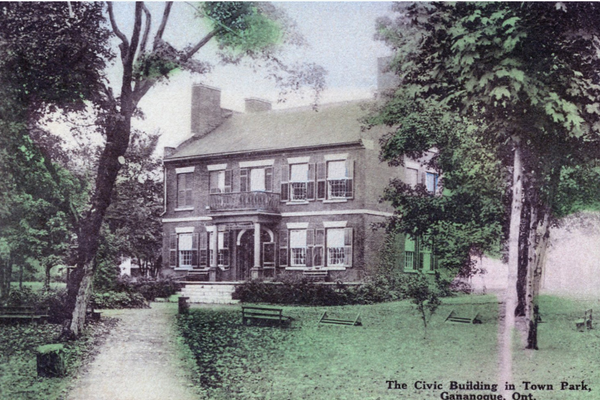
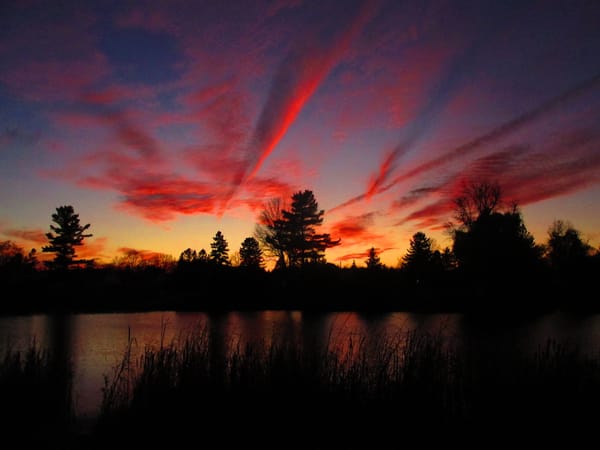
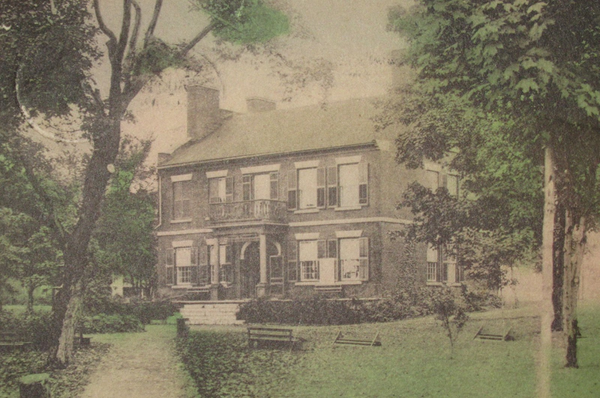
Please click here if you are unable to post your comment.